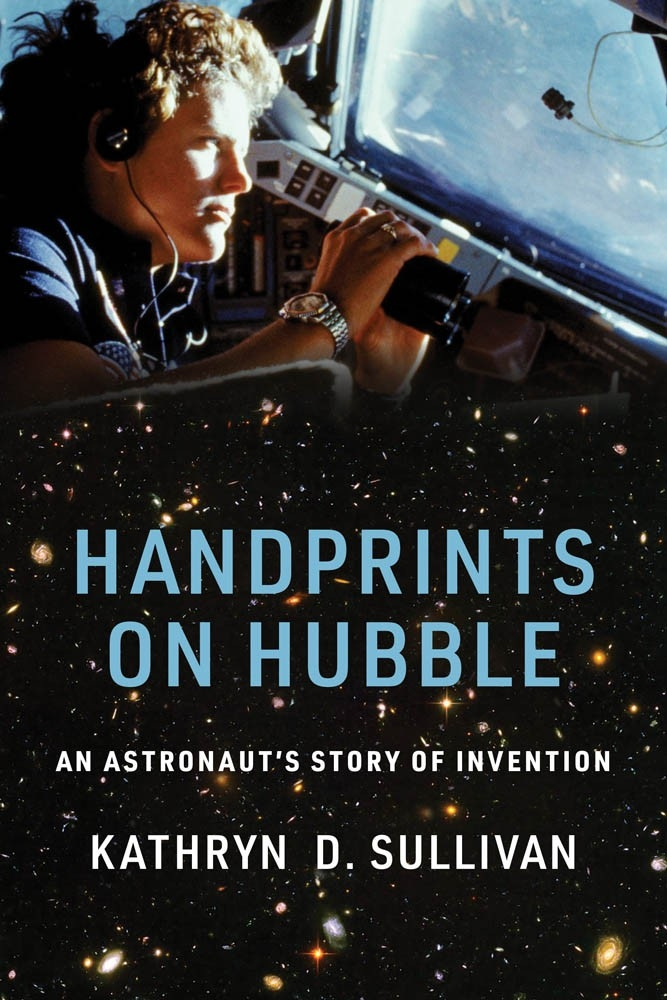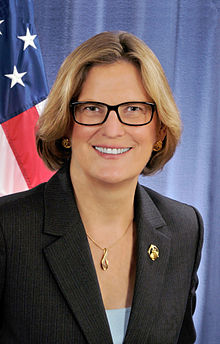I’ve been hoping for this book for 20 years.
As a kid, I invested myself in a plethora of interests one of which was the space program. I loved every era of NASA history, reading and watching everything I could lay hands on. I still watch rocket launches and space walks – and I might read a little less, but the allure of a new space book, even one that covers pretty much the same thing as many that came before, is very hard to resist.
Many of the people I can point to as the “heroes” of my teenage years were connected to NASA. Many of those people are obvious like John Glenn, Gene Kranz, Jim Lovell, and Neil Armstrong. And others are less remembered like Robert Goddard, Deke Slayton, Bruce McCandlless, Guion Bluford, and Eileen Collins. Falling somewhere in the middle are the first six women who served as astronauts. Everyone knows who Sally Ride was, but I always found Shannon Lucid and Kathy Sullivan’s stories more interesting, and teenage me was disappointed to find they never got any biographies or autobiographies.
Several years ago, a news article about another celebrity falling from grace prompted some morbid googling on my part. Many of those people whose flight numbers I memorized and whose pictures I posted on my wall must be still alive, right? How were they faring the test of time?
I am happy to report that as a whole most of the names I looked up came through unscathed. Mostly because all we as a public know about them is their time in NASA, but I still take that as a win. If they had done something worth being drug through the mud for since then, I’m confident it would have made the news. But unexpectedly, one of them stood out in a good way.
Kathy Sullivan retired from the space program to do equally cool and impressive work with NOAA. In fact, given how little press her time as an astronaut seems to have gotten, she’s probably better known to the public for her work there than at NASA. However, while Dr. Sullivan might not have been the first American woman in space, she got to be the first American woman to do a spacewalk.
And finally, I’m holding her book.
Okay, I’m holding her second book. Several years ago, she helped author a kid’s picture book biography called Too the Stars. I purchased it as soon as it came out too, and it is a very well loved bedtime read at our house that probably deserves its own post someday. But, as giddy as I was to get that after all those years, that’s nothing compared to finally having the real story. And Dr. Sullivan clearly knew where to focus her book because as much as this is her story, in her words, it’s all going to the thing that made her stand out all those years ago: launching the Hubble Space telescope.
Look, part of being a good nut about anything is having opinions. And being a NASA nut, I had and have many feelings about the direction of the program in general. I feel gipped that no one has walked on the moon in my lifetime and unsure why NASA allowed itself to become so earthbound with the shuttle program. However, the shuttle program had some massive high points too, and the Hubble program has to be up near the top of the list.
 But I suppose a critique of the book I’m reviewing is actually order. Handprints on the Hubble is an excellent autobiography and even better book about space. Like any firsthand account I’ve read from an astronaut, it’s got a bit of slow start. I’m not reading these books to learn about their author’s childhood and education so that part always goes into the “not meant for me” category. Though I will say, I love how Dr. Sullivan writes. It’s very conversational, and mostly I feel like I’m hearing a lecture rather than reading a book. Her story through it all is very streamlined and precise with almost blunt wording. (Unlike this review!) She’s telling the facts as they happened, and her emotions and private musings are much rarer than I’m used to in this kind of book. So I didn’t skip the early life section like I often do. But where Dr. Sullivan’s style of prose really starts to shine is when we get to NASA.
But I suppose a critique of the book I’m reviewing is actually order. Handprints on the Hubble is an excellent autobiography and even better book about space. Like any firsthand account I’ve read from an astronaut, it’s got a bit of slow start. I’m not reading these books to learn about their author’s childhood and education so that part always goes into the “not meant for me” category. Though I will say, I love how Dr. Sullivan writes. It’s very conversational, and mostly I feel like I’m hearing a lecture rather than reading a book. Her story through it all is very streamlined and precise with almost blunt wording. (Unlike this review!) She’s telling the facts as they happened, and her emotions and private musings are much rarer than I’m used to in this kind of book. So I didn’t skip the early life section like I often do. But where Dr. Sullivan’s style of prose really starts to shine is when we get to NASA.
As much as I love the space program, I’m still working from layman’s understanding of engineering and math. Many astronaut stories focus on the experience of going to space, but some do delve into the technology or the science. Unless the author uses a pretty broad brush in explaining those things, I generally get lost. I get why putting a square cartridge in round hole with whatever you happen to have in space is hard. I am excited when a solution is found. But I can’t really tell you what that solution was. Handprints on the Hubble does an amazing balancing act with the technical side of the story. It’s told with just enough simplicity and extra explanations that I understand it, without dumbing the science down into “yay telescope!” I genuinely learned science as I read, and I realized I never had to reread through the technical explanations to work things out.
I also read it through in one go which is getting uncommon for me. I even did it during the afternoon which is even more unusual. That’s prime kid interruption time, and I often lose track of storylines and find myself having to start over. When Handprints on the Hubble was delivered, I sat down to page through it and see if I thought it was going to live up to what I wanted it to be. Three hours later, the answer was yes. I could not put it down, and I haven’t been this excited over space stuff in years. The kids and I spent the rest of the afternoon looking at Hubble pictures, star maps, and telescope schematics. I still hope that someday I’ll get to hear Dr. Sullivan talk about her time in space in person, but if this is as close as I get, I’m quite happy. It feels rare to have something I cared about so passionately come back into my life untarnished and improved. I look forward to the sequel about ocean exploration.
I would highly recommend this book for anyone high school and up who is even the least bit interested in space exploration. Now I’m going to go read it again for the third time. And tomorrow I’ll probably read it again.
